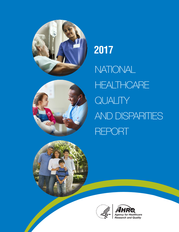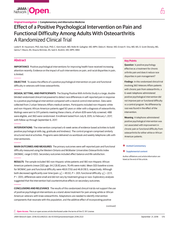Veteran Health Equity and Disparities
Overall, the VA has fewer issues with disparities compared to other health systems. However, some Veterans and VA facilities may experience disparities in health and healthcare outcomes.
Health and healthcare disparities adversely affect groups of people who have often experience social or economic obstacles to health or a clean environment based on characteristics linked to discrimination or exclusion including:
- Race/ethnicity
- Sex and gender
- Age
- Geography
- Religion
- Socioeconomic status
- Sexual orientation
- Mental health status
- Military experience
- Cognitive, sensory, or physical disability
Visit the VHA Office of Health Equity for more details about Veteran health equity issues, VA’s strategic plan to achieve health equity for Veterans - VHA Health Equity Action Plan, and to sign up for Veteran Health Equity Updates.
Recent Health Equity Updates, News, and Tools
2017 National Healthcare Quality and Disparities Report

The annual National Healthcare Quality and Disparities Report is mandated by Congress to provide a comprehensive overview of the quality of healthcare received by the general U.S. population and disparities in care experienced by different racial and socioeconomic groups. Data from the 2017 report is available on the NHQRnet
website.
- The Data Query Tool now includes supplemental measures
- The Resources tab includes new resources added to
“Addressing Disparities and Improving Quality” and updated methods used in
the National Healthcare Reports
- Updates to the home page
- Added State/County statistics for Cancer
Effect of a Positive Psychological Intervention on Pain and Functional Difficulty Among Adults With Osteoarthritis: A Randomized Clinical Trial

Key Points
-
Question: Is positive psychology effective as a treatment for chronic arthritis pain and does it reduce race disparities in pain management?
-
Findings: In this randomized clinical trial involving 360 Veterans Affairs patients with chronic pain from osteoarthritis, a 6-week telephone-administered positive psychological intervention did not improve pain or functional difficulty vs a control program. No difference by race was found in the effect of the intervention.
-
Meaning: A telephone-administered positive psychological intervention was not associated with improvement in chronic pain or functional difficulty from osteoarthritis for either white or African American patients.
Hausmann, LR., et al. (2018). Effect of a Positive Psychological Intervention on Pain and Functional Difficulty Among Adults With Osteoarthritis: A Randomized Clinical Trial. JAMA Network Open, 1(5), e182533-e182533.
|